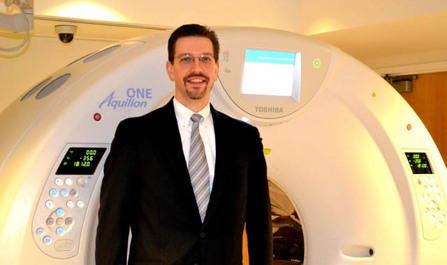
A prospective study has revealed that cryoneurolysis could be a potential treatment for patients with neuralgia when conventional treatments fail. The minimally invasive treatment at the site of focal neuralgia statistically significantly decreased pain scores in patients.
The results of the 20-patient study also showed that the decrease in pain levels was temporary and that repeat treatments were necessary in all patients. Data were presented at the Society of Interventional Radiology’s 38th Annual Scientific Meeting in New Orleans, USA.
The study set out to determine the effect of nerve cryoablation on pain levels in patients with documented neuralgia in a case mix that included intercostal nerves, foot neuromas, ilioinguinal, saphenous, and gluteal nerves. Cryoneurolysis has been used to obtain analgesia in several pain syndromes including occipital neuralgia, intercostal nerves for post-thoracotomy pain syndrome, entrapped ilioinguinal nerves, neuromas, and other conditions, the authors of the abstract noted.
Neuralgia patients often rely on pain medications that have side-effects and may not provide enough relief. Cryoneurolysis uses a small probe that is cooled (from -10 to -16 degrees Celsius), creating a freezer burn along the outer layer of the nerve. This interrupts the pain signal to the brain and blunts or eliminates the pain while allowing the damaged nerves to grow over time. “The effect is equivalent to removing the insulation from a wire, decreasing the rate of conductivity of the nerve. Fewer pain signals means less pain, and the nerve remains intact. Cryoneurolysis offers these patients an innovative treatment option that provides significant lasting pain relief and allows them to take a lower dose of pain medication—or even skip drugs altogether,” said William Moore, medical director of radiology at Stony Brook University School of Medicine in Stony Brook, USA.
In the study, 20 patients received cryoneurolysis treatment for a variety of neuralgia syndromes and were evaluated using a visual pain scale questionnaire immediately after treatment during the one-week, one-month and three-month follow-ups after the initial procedure.
With the exception of one patient, all other patients included in the study described improvement in their pain. Pain in the cohort decreased from an average of 8 out of 10 on the pain scale pre-treatment to 2.4 one week after treatment.













